I recall getting super excited about VR as a child, namely the monstrosity of a headset created by Sega that turned out to be a complete pile of shit, and various shows on television that had a computer generated aspect, or actual VR as it stood then. It was all very disappointing, but what about now? 25 years or so later.
Failed attempts of the past
Firstly I should briefly apologise for not posting for so long, not that I expect anyone to actually care, but hey, it’s the thought that counts. Life happens and other stuff takes priority. Anyway…
So yeah, Virtual Reality, were you old enough to remember Sega’s awful attempt from the 90’s?
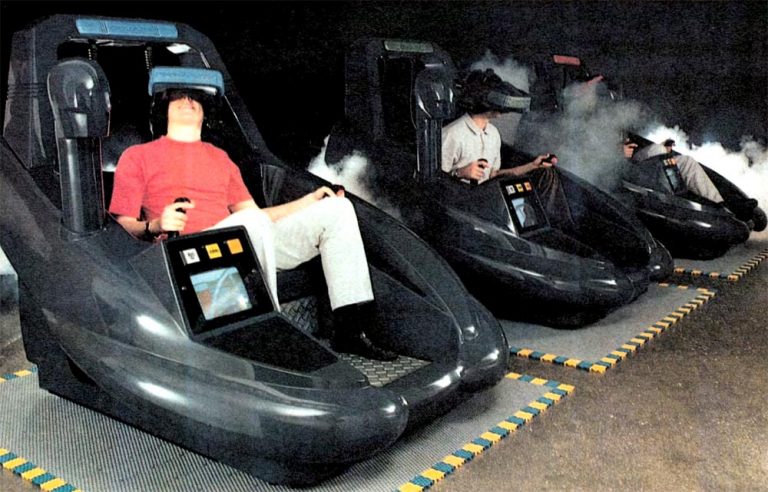
Someone may well correct me on the above, and say that it wasn’t Sega, to the best of my memory (which isn’t great), I think it was Sega, but hey, if you know otherwise, please comment below!
At the time, I remember daydreaming about what it would be like to actually play this, there was a program on the television, presumably around the same time, where a team of contestants would battle it out in the a virtual realm, firing arrows at each other. At least that’s what I can recall anyway. After a quick Google, I found this,
I know it looks shit now, but then it was amazing. Unfortunately though, this kind of tech never actually made it to the average consumers home, not that our family was ahead of the trend in any respect of the matter, but I don’t know anyone that had any kind of VR system at home. I finally got around to playing on the standing version of the system, at the Trocadero in London, when I was in my late teens. All I remember is the extremely badly aligned screens that were massively blurry and the blatantly broken controls that done nothing, quite simply, it was broken and shouldn’t have been being used, let alone charging people to use it!
Quite frankly it was headache inducing, but even if it wasn’t blurry as fuck, the performance of the graphics was so sub-par that it was always likely to induce vomiting.
Also in the 90’s was the Virtual Boy, by Nintendo.
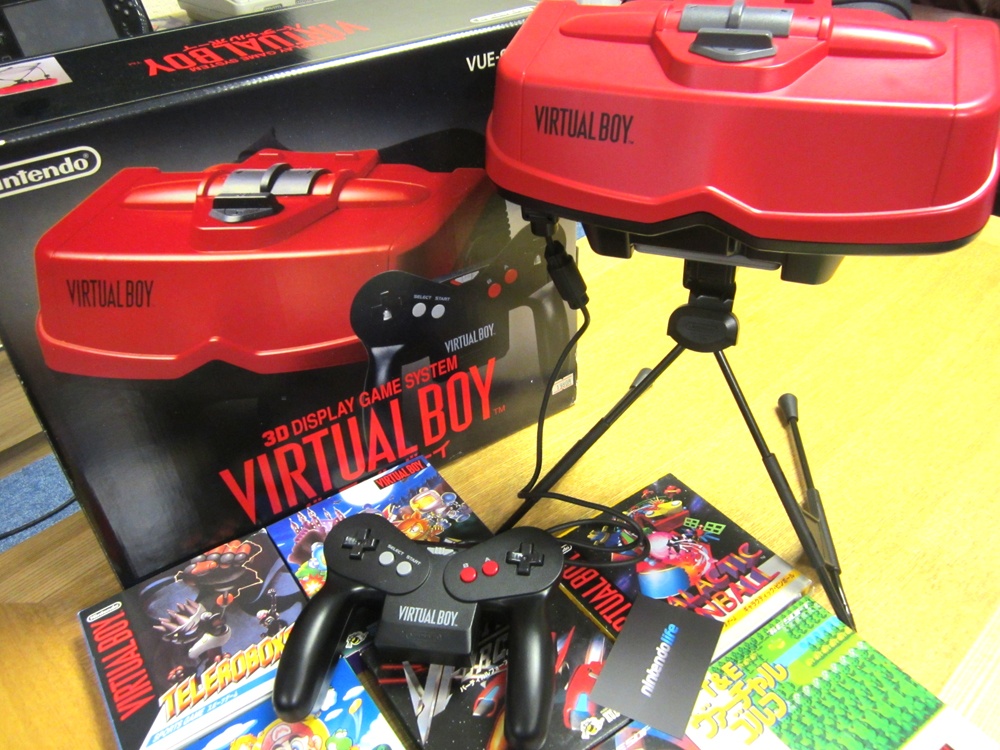
Now I never actually played the VR Boy, and have no idea what the games looked like on it, so I can’t really comment, other than making an assumption that it blew ass, as it never took off. If Nintendo can’t get a piece of shit to succeed, then it really is a piece of shit, just look at every console they have released since the SNES… SHITBALLS!

Apparently that’s what the games looked like, so yeah… it blew. Maybe the 3D effect was awesome, but I very much doubt it.
Smartphones, the gateway to VR
Now the Oculus Rift has been about since 2012, as a KickStarter, then officially released in March 2016, so just over 2 years ago at the time of writing this post. Without a doubt, this device reinvigorated the quest for virtual gaming, but unfortunately it wasn’t immediately accessible. Requiring a top-spec gaming PC which could set you back the best part of £1k, then the headset on top for like £400, it was still costly. It was also necessary, and is still one of the most popular VR devices to date, and Oculus are definitely the benchmark of VR companies in 2018. There have been 2 development kits prior to official release, and again, I don’t know anyone that had one, but then again none of my friends are actually into tech like this.
That leads us nicely to smartphones, and the introduction of the Samsung Gear VR, made in partnership with Oculus. This device was actually released around the same time as the Rift, but then it provides only a taste of VR in comparison. Having only 3 degrees of freedom, allowing you to rotate your head in the 3 axis (X,Y,Z), but not allowing you to move along the axis, so you can’t duck, peek, jump etc. The Gear VR works as a headset that you insert your smartphone into, this provides the computing power and screen all in one.
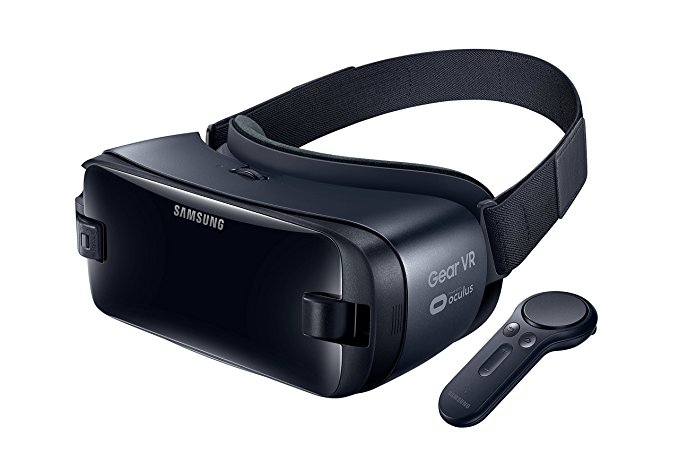
Now that might make you think that it’s shit because of this limitation, but you should really give it a go before coming to that assumption. All it requires is an engaging game, and you really don’t care about the limitations. For me personally, it’s enabled me to enjoy gaming again, to the extent of actually getting excited about games, and getting excited these days is something that doesn’t come easy!
What about Google Cardboard?
A couple of years prior to the Gear VR and the Rift, Google released Cardboard, which is an extremely cheap, DIY headset that you can make, simply by folding up a piece of cardboard and inserting your phone into it. Although this might seem very similar to the Gear VR, and it is a whole bunch more accessible, as you don’t need a Samsung smartphone, it also lacks the performance of the Gear VR due to not having additional sensors. The Gear VR has additional sensors built into the headset itself that provide a far more accurate accelerometer reading than using the sensor in the phone, I have no idea why, but that’s the case. Google Cardboard also doesn’t have the backing of Oculus, and so far Google have proved that they suck at VR.

The “other” mobile VR worth a mention is also from Google, Daydream, and personally I think it sucks, and here’s why. Firstly the headset doesn’t fit properly as it has no top strap, the phone isn’t held in as securely as the Gear VR, and the store is totally horseshit. Seriously, think Microsoft Surface RT Store levels of shitness, and you’ll be correct, with a few “big” titles on there, surfaced by a very crap menu system, it is quite simply, light years behind the Gear VR.
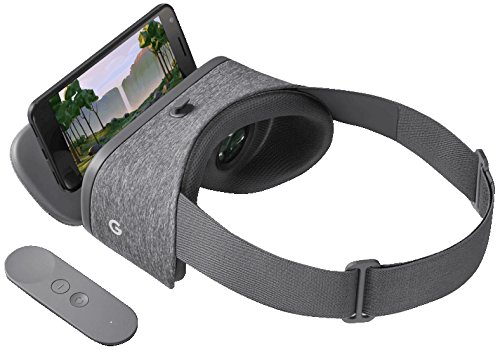
Smartphones still have a long way to go with VR, but if you want to dip your toe into the world of Virtual Reality, I highly recommend a Gear VR and a supported Samsung smartphone, such as the S8.
Microsoft’s Windows Mixed Reality
Another headset that I have acquired, is of the Windows Mixed Reality (WMR) variety. The Acer version to be exact, which aside from the appalling build quality, is actually pretty fun and a great entrance into VR with 6 degrees of freedom, without the requirement of external cameras.
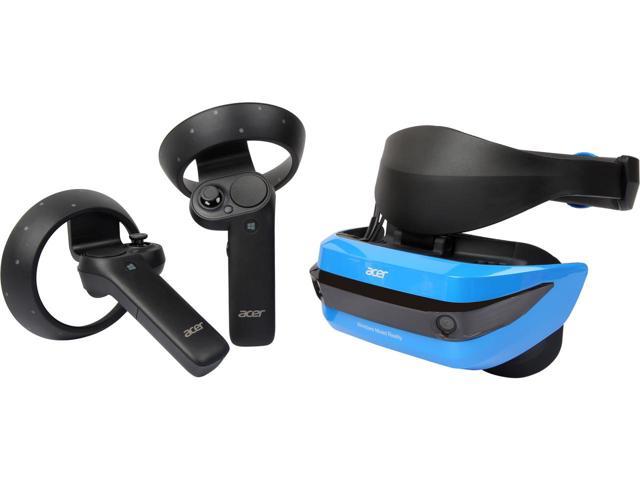
It would be a good time to mention the stupid nomenclature from Microsoft at this point. Mixed Reality does not mean that this headset will act like a Hololens headset, just read it as VR with inside-out tracking. Unlike the Oculus Rift, WMR does not require external sensors to detect where the controllers are at, it uses cameras inside the headset itself, which isn’t as accurate, but that’s the price of convenience, and also opens up the door for potentially limitless travel headsets.
I purchased the Acer headset toward the end of 2017 as yet another gadget to hopefully spur my development gland into actually making some products of my own to release to the world. And yup, I have some things in the works, but as is the life of a developer, it’s a very slow process, but hopefully I’ll get something released at some point. Anyway, I digress, the headset itself, as mentioned above, is of appalling build quality, and lacks the design experience of Oculus, who know how to make a headset fit your face. It has a rather pathetic piece of foam that doesn’t even fit the headset correctly,
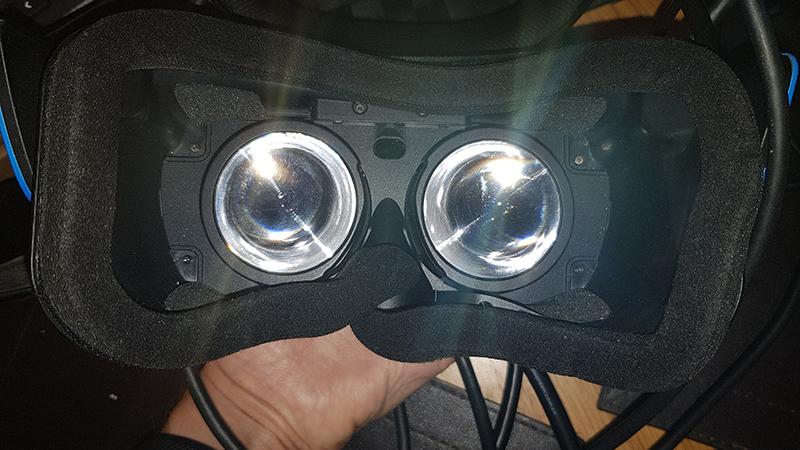
I’ve played a whole bunch of games so far on WMR, mainly via the Steam store, but also via the Windows Store. Here are just a few of my favourites,
Go and check them out, they aren’t free ones, so if it’s free you’re after, you’ll have to do a little hunting about as there is plenty of stuff on there.
Honourable Mentions
I should also mention the other headsets that I don’t have, and haven’t played, so what they are like would be purely based on other peoples opinions at this point.
Playstation VR
Sony have done well to bring a headset to the masses, via the medium of PlayStation, as it’s quite simply the most popular gaming platform for non-PC peeps.
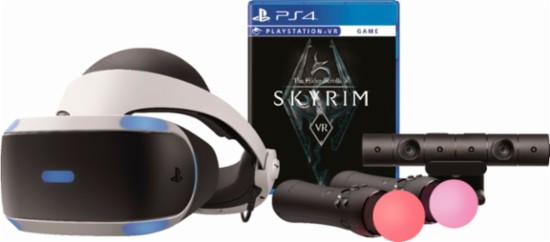
The headset and controllers sport 6 degrees of freedom via the external camera that must have full view of the person playing the game, so it requires more room than a WMR headset but as you would expect with PlayStation, you can just purchase a game and play it, without having to piss about with graphics card configurations / drivers / system optimisations etc.
I know people that have it, and they recommend it, although it can make you feel a tad sick (apparently), it’s also not great resolution, but still, if you have a PS4 and want to get into VR, try this.
HTC Vive / Vive Pro
The main competitor to the Oculus Rift, and some would actually say, the superior competitor, the Oculus Rift is definitely at the top of the pile when it comes to build quality. But expect a premium price for that quality.
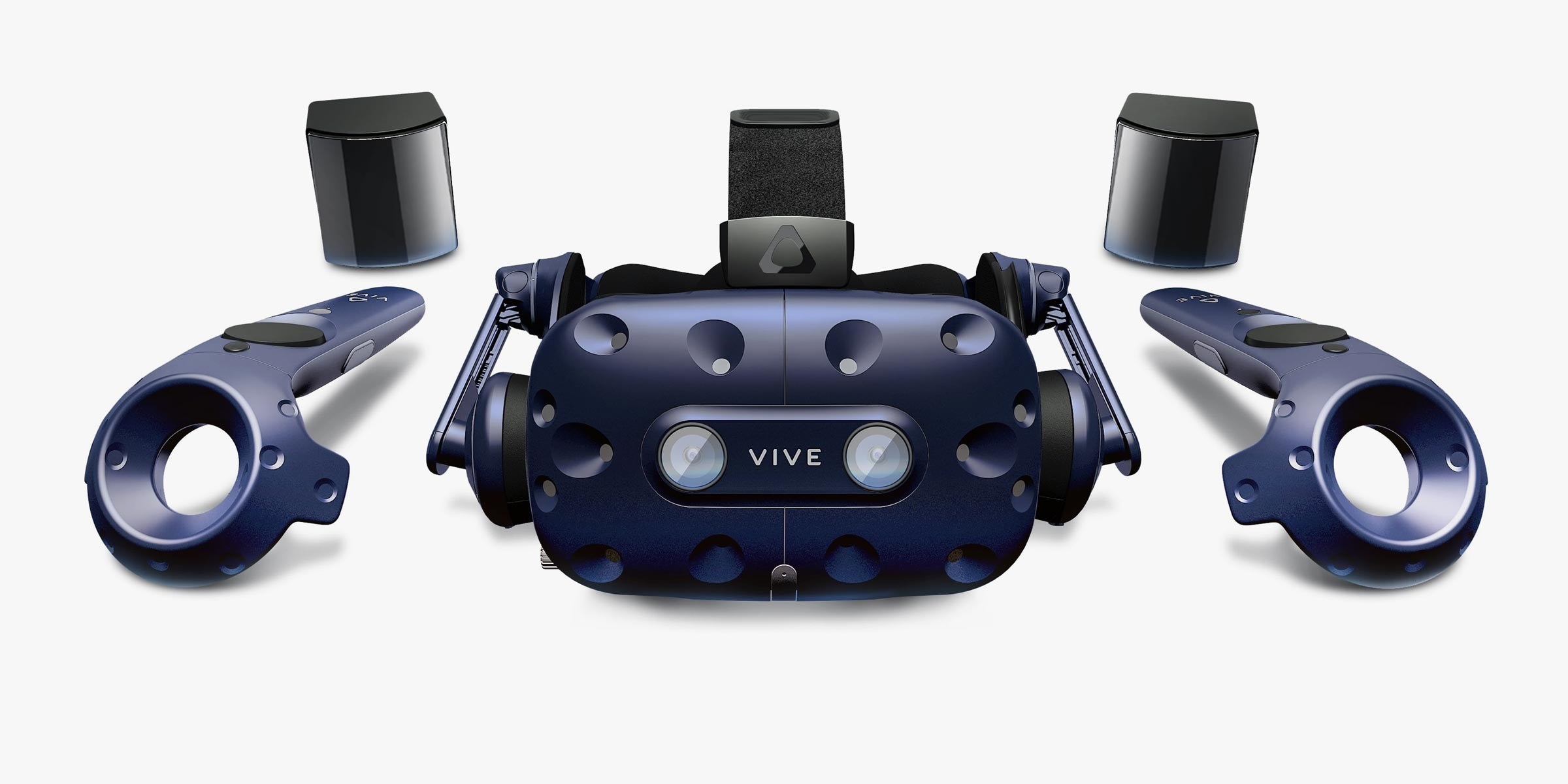
I can bet that some people reading this would be laughing that this only gets an honourable mention, but as I said, I haven’t tried it so have no opinions on it, other than that I have formed from YouTube videos and articles, which you can do yourself. Personally I think it’s a bit expensive, and their Vive Pro doesn’t really change the game, it merely improves build quality, but even with inside-out tracking sensors in the headset, it doesn’t use them to track the controllers, so you still need the external sensors, which aren’t included by default, so it’s gonna cost you to get this up and running. Compounded by the fact that it requires a high-spec gaming PC, above that of the WMR requirements.
Still, if you have the money, get this and the Wireless addon and you will definitely have the best VR setup you can get at current.
Standalone Headsets
Finally there are a bunch of stand-alone headsets that have made their way onto the scene in the past few months, As with the Vive and PS VR, I have no experience of them, so will just list them.
- Oculus Go
- HTC Vive Focus
- Lenovo Mirage Solo (Daydream)
It’s still very early days for this category, as from the small list above (and there are others), the Go is the only one with a decent store, thanks to Oculus, but the battery life is shite, the Vive Focus is closely behind as it has access to some HTC content, but not everything as the device is Android based. The Lenovo Mirage Solo suffers from the same problem as the Google Daydream, and that’s the shitty store, so be careful getting this one.
Anyway, that’s enough from me for now, hopefully this gives you a nice basic view of the VR devices available and why you should invest in one, even if you’re just in it for the VR donkey porn… (jk of course, although I’m sure that exists).

Comments